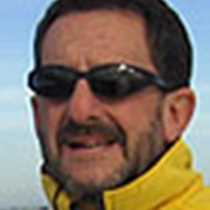Our expedition awoke to this, our final full day together, with a special sense of adventure as our ship of exploration, National Geographic Sea Lion, was docked at the confluence of the Snake and Clearwater rivers on the border between Washington and Idaho. It was here, on this very date just 209 years ago that two captains, 31 men including York the slave, a Newfoundland dog, a Shoshone girl and her baby paddled through this confluence of history. The Lewis and Clark Corps of Discovery was on its way on the final leg of its journey to the sea – the Pacific Ocean, that represented President Thomas Jefferson’s ultimate nation building and economic objectives.
Our party split in two on this day. One group to explore the lower reaches of the Snake up to Hell’s Canyon to reach the Salmon River. The other went out along the Clearwater to retrace the steps of the Corps of Discovery as they traversed the foothills that extend far out to the Bitterroot Mountains of the Rockies. Neither was disappointed in the success of their explorations; and reporting back at the end of the day shared their experiences with interested shipmates.
Along the Clearwater, Lewis & Clark and Nez Perce expert historian and interpreter Lin Laughy mesmerized the assemblage with stories of the Corps of Discovery. Standing at Long Camp and Canoe Camp, we were on the trail of Lewis and Clark for sure. The journals described the surroundings as they would have been seen two centuries ago. You could feel the electricity in the air and almost feel the Corps stirring across the plains!
The same morning, after breakfast, our shipmates boarded a jet boat and zoomed off, racing up the Snake River in search of adventure, displays of spectacular geology and wildlife. They were also rewarded as the amazing craft skimmed across the thin layer of river water above the rapids. Making excellent progress, the jet boat took them past the “river of no return”, the Salmon. Up into the Mountain Sheep Rapids they went. This 62-foot-wide narrows wrecked the125-foot steamer Imnaha in 1903. Later in the day, the group was indeed treated to sightings of deer, turkey and bighorn sheep.
As the end of the day approached, we met up at the Nez Perce National Historic Park. Here we could view the Spalding collection and learn more about the native peoples that helped the Lewis and Clark expedition make their way to the Columbia River and eventually to the Pacific Ocean.
All the days of our expedition will find a special place in the “oral traditions” of our guests. This one especially so, as our coincidental timing with history became a confluence of learning and enlightenment.









